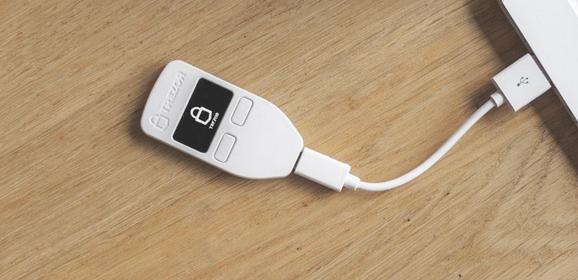Top 3 Bitcoin Hardware Wallets
Hardware wallets can be used for day to day transactions and offer improved security than paper and software wallets in the case of theft, loss or scams. You can also restore coins on a new wallet when the existing hardware wallet gets lost, gets damaged, gets stolen or the computer gets hacked.
With a hardware wallet, you transact cryptocurrencies with a tamper-proof electronic device and without spy screen recorders and trojans that can record what is happening on your hardware wallet.
Hardware wallets use a private key stored offline, making it safer from hack attacks although you will still need to write down the seed word on a piece of paper and store it away. Various wallets add in various security features: some have security grid cards and other little digital screens with a user interface to verify transactions.
The Ledger Nano S
Ledger Nano S is the cheapest multi-currency hardware wallet available ($65) compared to TREZOR or KeepKey at $99. Nano S supports Bitcoin, Litecoin, Ethereum and other 7 cryptocurrencies.
With it, you can receive and send payments, create and run multi-account wallet, use authentication for online services, and run companion applications such as FIDO® U2F, GPG, SSH or assemble your own particular applications.
It is easy to set up on any desktop computer. Unlike the Ledger Nano and Ledger HW.1, the Nano S has a screen meaning it can be used even on a computer that is infected with malware -- just like KeepKey or TREZOR.
It ships with 1 micro-USB cable, lanyard for wearing the device around the neck, one keychain and key ring and a recovery sheet for writing down seed.
Two physical buttons on the hardware will add insecurity because you need to physically have the device and to physically press the two buttons at the same time to confirm payment, making it hard for hacks.
Trezor
Trezor was created by SatoshiLabs and is the world's first secure Bitcoin hardware wallet. It costs $99 for one, or $276 for three and you can pay with Bitcoins from the company's website or with a credit card or bank account from Amazon.
Like the Nano S, transaction sending is confirmed by manually pressing two buttons on the device, thus making impossible to automatic hack send from your device. The main comparison between the two is that Trezor is more of a mini computer, while the Ledger Nano S uses a secure chip.
The open-source software device has no serial number and there are no usernames or passwords needed when using it.
Private keys are stored offline and you can also sign transactions offline. You can also use a nine digit pins and a 24-word recovery seed key to restore device in case it is lost or stolen. You can recover it with another Trezor or Electrum, Mycelium, MultiBit HD, and GreenAddress on desktop, GreenBits software wallets.
This seed is generated offline and displayed on the device's screen. You can also add a a passphrase non top of the seed for extra security, and you require it before using the seed and you cannot recover the wallet if you forget the passphrase.
You also create a PIN during set up and this PIN is required for spending the coins. After each incorrect guess, the wait between guesses is raised by a power of two, meaning you could take 17 years to do 30 guesses.
Like the Nano S, this Bitcoin hardware comes with a screen for extra protection and verification. Like the Nano S, it can be used on a computer infected with a malware. The device connects to a computer via a USB cable just like Nano S.
Setting up is done through the website, the Chrome extension or via the command line.
KeepKey
KeepKey HD wallet packs in more features than TREZOR and Ledger Nano S at only $99. It is compatible with Litecoin, Dogecoin, Namecoin, DASH, and other altcoins so it can work with these if the software is integrated.
For security, you store your private key offline, and pin code and number randomization. The private key is generated using its hardware-based random number generator combined with randomness provided by your computer.
It is generated offline and displayed on the device's screen and not an internet-connected device. After generation, you write a back-up of your KeepKey in the form of a twelve-word recovery sentence. You can use the seed with a Chrome extension to recover the device.
It packs a confirmation button that has to be physically pressed in order to confirm transaction. KeepKey is also pin protected just in case it gets into the wrong hands.
It also works with Electrum, KeepKey Chrome, and MultiBit HD software wallets.
In comparison with Trezor, Trezor is plastic and lighter thus more drop-proof than KeepKey but KeepKey is alumium with a more premium feel but heavier.





